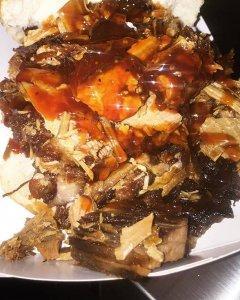
Today’s BBQ Taste Secrets: Is it the Sauces, Spices, or Technique?
Cooking over an open flame is a time-honored, nuanced art form that has taken hundreds of years to perfect, which is why many of us struggle with grilling and barbecuing in today’s day and age – it’s simply not as easy as it looks. If we aren’t cremating burgers and incinerating chicken breasts, we’re probably undercooking the pork and poisoning our friends.
So why in the world do we choose to employ such a multifarious style of cooking on days that are supposed to be earmarked for summertime relaxation, drinking cold ones, and kicking back? The answer is quite simple, really: when prepared correctly, barbecued foods are straight-up delicious!
If you’d like to exit the realm of charred meats and enter into the dominion of BBQ bliss, feel free to use this brief exposé as an introductory guide to understanding the ins and outs of how to grill the right way in today’s day and age.
Marinate
Like many other positive things in life, a successful barbecue begins with sound planning and effective preparation, which is why proper marinating techniques are so crucial when working on an open grill.
A good marinade is comprised of a number of extracts, spices, sauces, and herbs, but most importantly, it must have an acidic base of some kind. Regardless of whether this acidity comes from vinegar, lemon juice, wine, or even beer, it will allow you to grill juicier, more flavorful meats while simultaneously reducing the presence of HCAs (carcinogens caused by cooking meats over an open flame).
Simply toss your meats in an acidic marinade a few of hours before you fire up the grill – the specific flavors are entirely up to you and your palate.
Give Your Grill Time to Warm Up
As any renowned grillmaster will tell you, it’s important to give your grill and all of its metal components enough time to come to an even temperature before you start tossing cold meats onto the grates. Giving your grill 20 minutes to heat up will allow you to exercise greater control over your proteins from start to finish.
Establish a Safe Zone
Regardless of whether you’re cooking with coals or burners, you’ll want to make sure that your cooking surface features at least one small section that isn’t over direct heat. This will give your food some breathing room and it will provide a viable “safe zone” for slower, less intense grilling; the ideal way to rescue burning meats and prevent eyebrow-singeing flare-ups.
Avoid Constant Touching
If timed correctly, it’s worth noting that all forms of meat are supposed to be flipped just once during a cook. To avoid any confusion or apprehension, just follow the progression shown below:
- Let the meat sit for a few minutes.
- Allow its edges to darken a little.
- If you feel resistance or stickiness when attempting to flip, leave it on that side for a little while longer.
- As soon as the meat “releases” from the grates with ease, it’s ready to be flipped.
“Not Enough” Is Better Than “Too Much”
When it comes to identifying appropriate cook times on a modernized grill, these are words to live by.
If you’re uncertain as to whether that slab of beef has been barbecuing for 5 minutes or for 20, just pull it off the grill without any hesitation. You can always place underdone meats and appetizers back on the grill to complete the cook; the same can’t be said of charred beef jerky.
Brush Your Grates with Oil
Even if you’ve already gone out of your way to brush your meats with olive oil, for instance, it’s in your best interests to do the same for your grates as well. Soaking a paper towel in oil and drenching your grates will allow you to prevent incessant sticking, not to mention the fact that it will help make your post-cook cleanup routine much simpler and infinitely less messy.

